Fun, Easy, and Educational Activities with Everyday Items
Looking for fun things to do at home with your kids? These science experiments are exciting and simple. You don’t need fancy tools—just everyday items from your kitchen or home. Kids will learn real science in a fun way.
Perfect for ages 5–12 (with adult supervision for some parts)!
Table of Contents
1. 🌈 Rainbow in a Jar
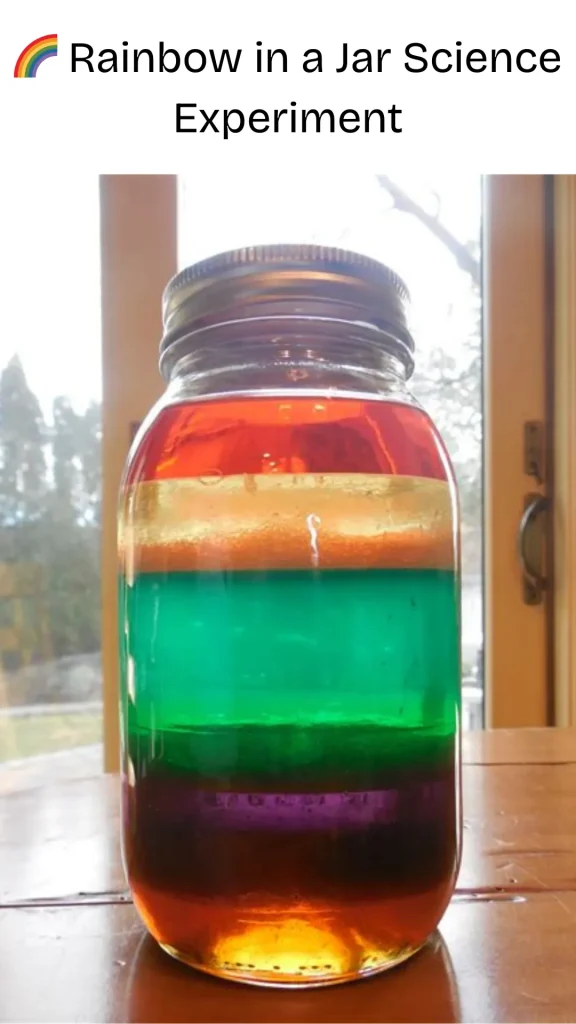
What you need:
- Honey
- Dish soap
- Water
- Oil (like vegetable oil)
- Food coloring
- A tall glass jar
Steps:
- Start by pouring honey into the bottom of the jar.
- Next, slowly add dish soap.
- Mix a few drops of food coloring into some water and pour that in slowly.
- Finally, add oil on top.
What happens:
You’ll see colorful layers form. Each liquid has a different weight (called density), so they don’t mix. The heaviest liquid (honey) stays at the bottom, and the lightest (oil) stays on top.
What kids learn:
This experiment shows how some liquids are heavier than others. It’s great for learning about density and layering.
2. 🌋 Baking Soda & Vinegar Volcano
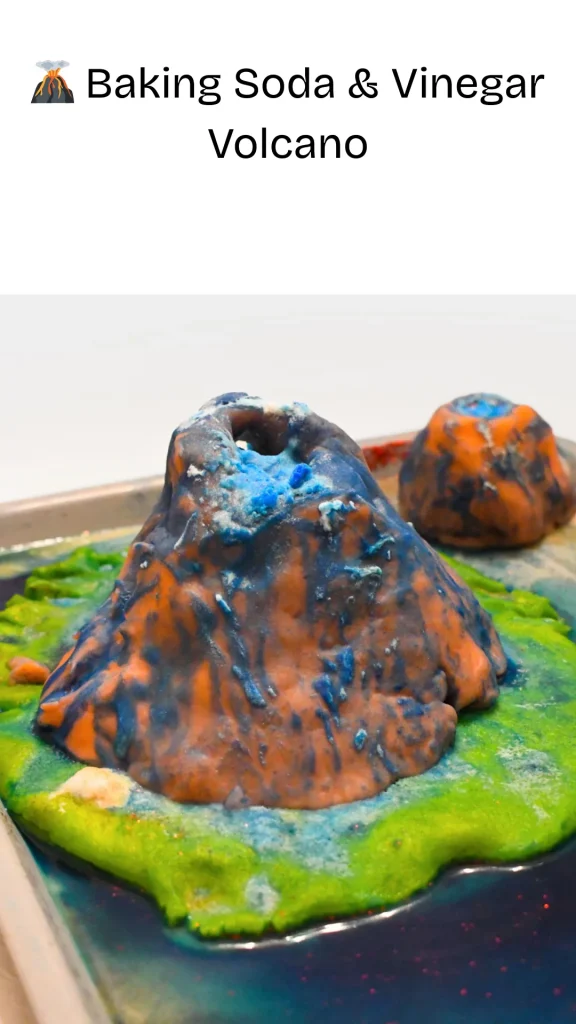
What you need:
- Small plastic container or cup
- Baking soda
- Vinegar
- Food coloring
- Dish soap (optional, makes bigger bubbles)
Steps:
- Put 2 tablespoons of baking soda into the container.
- Add a few drops of food coloring and a small squirt of dish soap.
- Pour vinegar into the container and step back!
What happens:
It fizzes up like a mini volcano! The mixture bubbles over.
What kids learn:
When baking soda (a base) and vinegar (an acid) mix, they make gas (carbon dioxide). That’s what causes the bubbly eruption. It’s an acid-base reaction.
3. 💧 Walking Water
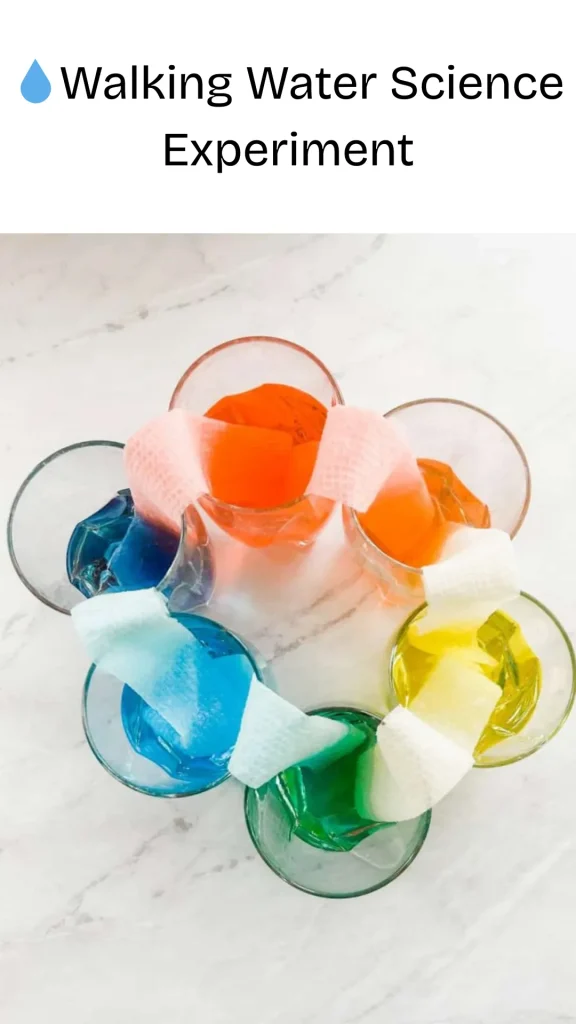
What you need:
- 3 cups
- Water
- Paper towels
- Food coloring
Steps:
- Fill the first and third cups with water. Add different food coloring to each.
- Leave the middle cup empty.
- Fold 2 paper towels and place them so one end is in the colored water and the other in the empty cup.
What happens:
Water “walks” through the paper towels and fills the empty cup. The colors mix in the middle!
What kids learn:
Water moves upward through the paper towel. This is called capillary action. It’s how plants drink water from the ground.
4. ✉️ Invisible Ink
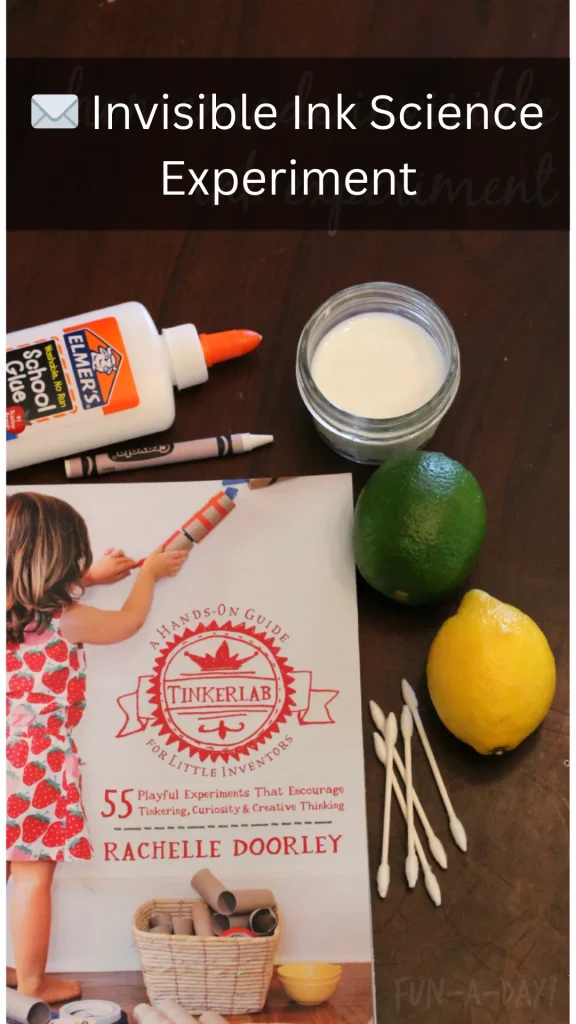
What you need:
- Lemon juice
- Cotton swab or paintbrush
- White paper
- Lamp or iron (ask an adult to help!)
Steps:
- Dip the swab in lemon juice and write a message on the paper.
- Let the paper dry.
- Hold the paper close to a warm lamp or use an iron to gently heat it (adults only).
What happens:
The message appears in brown!
What kids learn:
The lemon juice changes color when it gets hot. It’s a simple example of a chemical change.
5. 🎈 Balloon Rocket
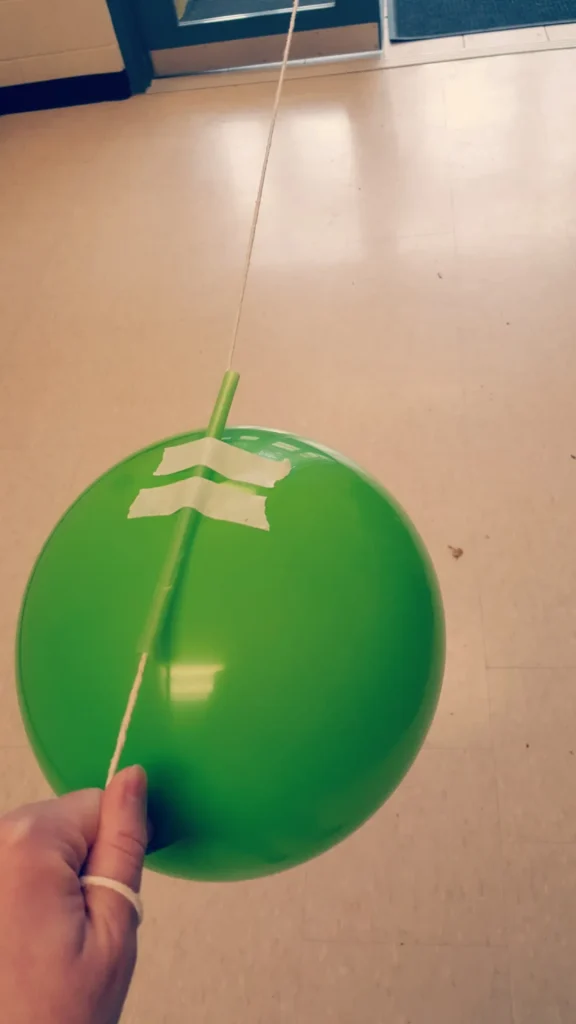
What you need:
- Balloon
- Straw
- Long string
- Tape
Steps:
- Thread the string through the straw and tie the ends between two chairs.
- Blow up the balloon but don’t tie it.
- Tape the balloon to the straw.
- Let go of the balloon and watch it fly!
What happens:
The balloon zooms across the string like a rocket.
What kids learn:
This shows Newton’s Third Law: Every action has an equal and opposite reaction.
6. 🟢 Oobleck (Weird Goo)
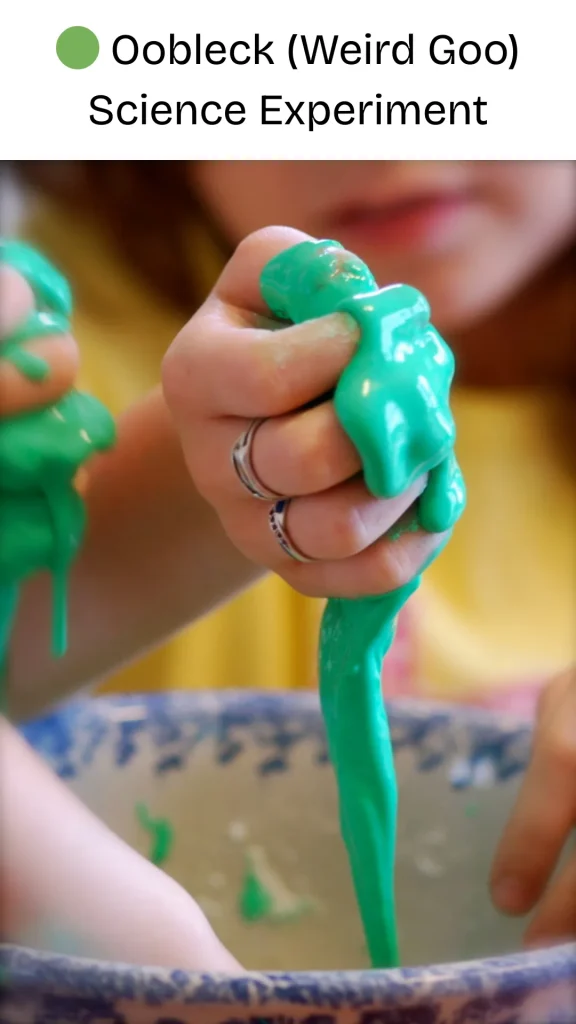
What you need:
- 1 cup cornstarch
- ½ cup water
- Bowl
Steps:
- Mix cornstarch and water in the bowl. Add more cornstarch if it’s too watery.
- Try to punch it fast—then try to let your fingers sink in slowly.
What happens:
When you press it hard, it feels solid. When you move slowly, it feels like a liquid.
What kids learn:
Oobleck is a non-Newtonian fluid. It acts like both a solid and a liquid depending on how you touch it.
7. 🥚 Bouncy Egg
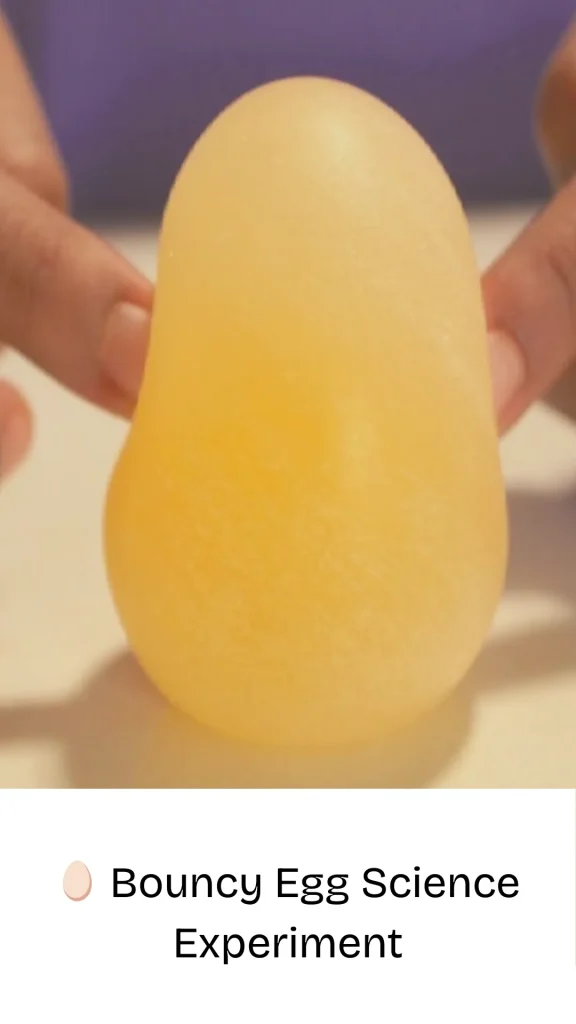
What you need:
- 1 raw egg
- Vinegar
- Glass or jar
Steps:
- Place the egg in the jar and cover it with vinegar.
- Let it sit for 24–48 hours.
- Take it out gently and rinse it.
What happens:
The eggshell dissolves. The egg feels rubbery and can bounce a little!
What kids learn:
The vinegar (acid) reacts with the shell (calcium carbonate) and breaks it down.
8. 🦋 Static Electricity Butterfly
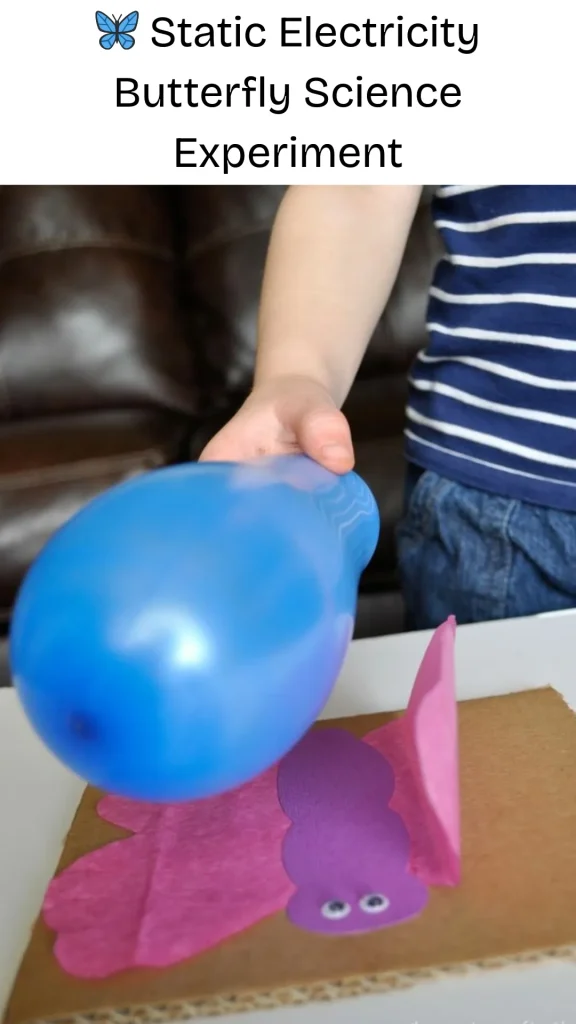
What you need:
- Tissue paper
- Balloon
- Construction paper
- Scissors
- Glue
Steps:
- Cut a butterfly shape from tissue paper.
- Glue the body (middle) to construction paper, leaving the wings loose.
- Rub a balloon on your hair for 10–15 seconds.
- Bring the balloon near the wings.
What happens:
The wings lift up and move!
What kids learn:
The balloon collects static electricity. It attracts the lightweight wings.
9. 🌋 DIY Lava Lamp
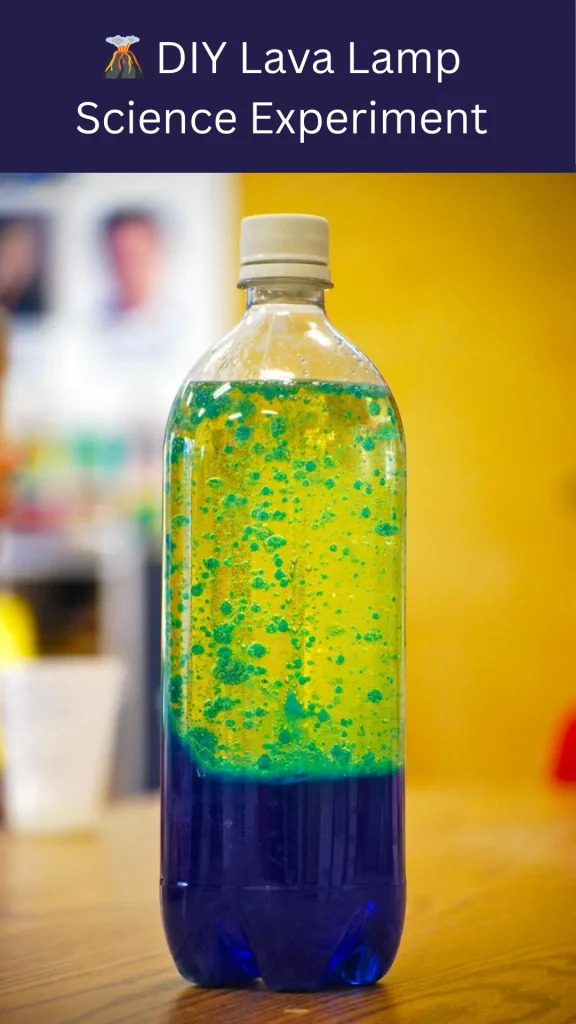
What you need:
- Clear bottle
- Oil
- Water
- Food coloring
- Alka-Seltzer tablet
Steps:
- Fill the bottle halfway with oil.
- Fill the rest with water (leave some space at the top).
- Add food coloring.
- Break an Alka-Seltzer tablet and drop it in.
What happens:
Colorful blobs rise and fall like a lava lamp!
What kids learn:
Oil and water don’t mix. The fizzing creates bubbles of gas that rise and fall in the liquid.
10. 🥛 Magic Milk
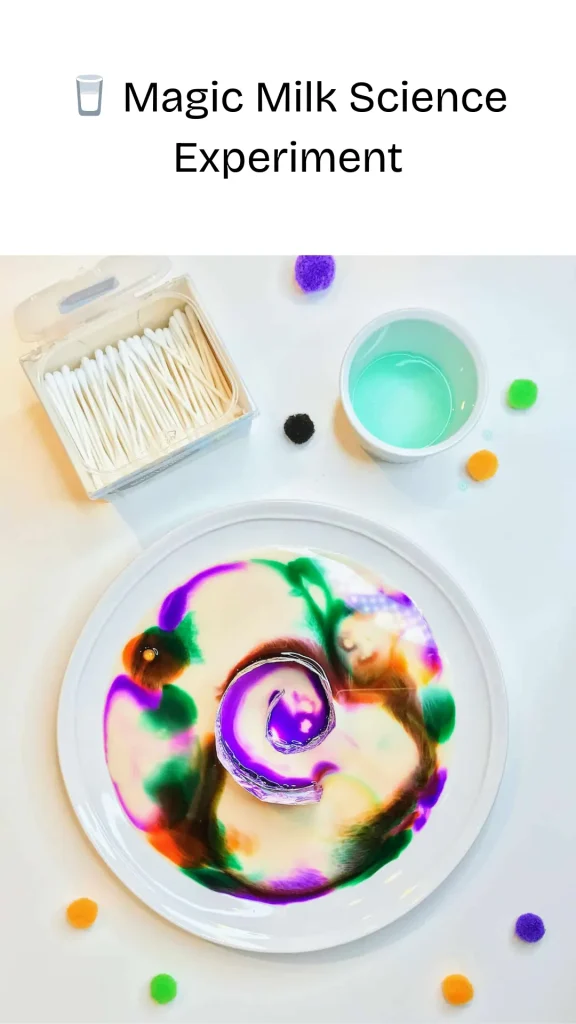
What you need:
- Milk (whole milk works best)
- Food coloring
- Dish soap
- Cotton swab
- Shallow plate or bowl
Steps:
- Pour milk into the plate.
- Add drops of food coloring.
- Dip the swab into dish soap and touch it to the milk.
What happens:
The colors swirl and move like magic!
What kids learn:
The soap breaks the surface tension in the milk and pushes the colors around.
🧠 Final Thoughts
Science doesn’t have to be hard — or boring! These simple experiments show that science can be fun, surprising, and easy to try at home. Plus, your kids learn real science ideas like reactions, energy, and motion.
Try one today and spark your child’s curiosity!
